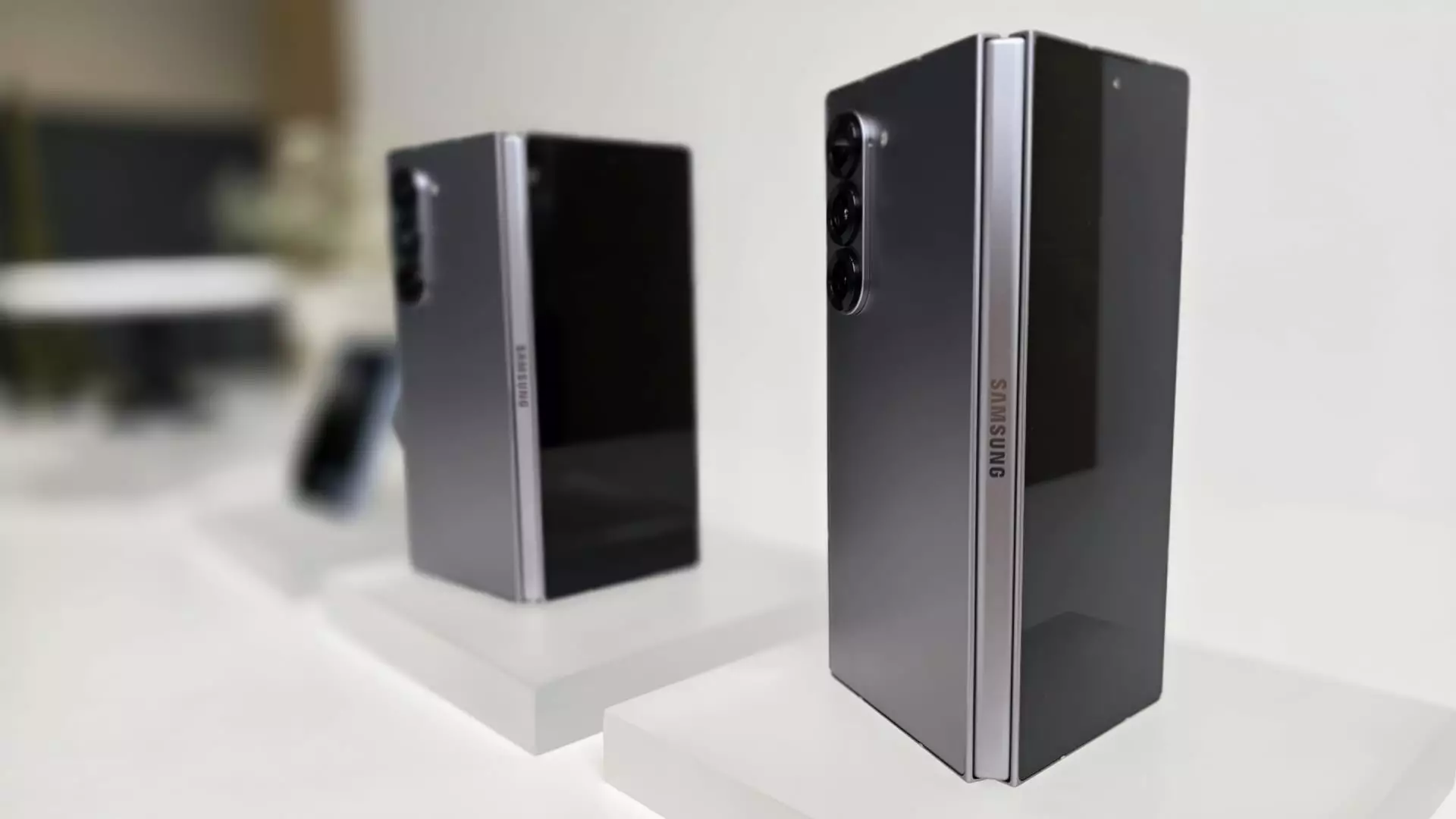The world of mobile technology is undergoing a seismic shift, with foldable smartphones taking the forefront in innovation. As we prepare for Samsung’s anticipated launch of a groundbreaking thinner version of its flagship foldable device, the competitive landscape is more intense than ever. Since Samsung first entered the foldable market in 2019, other manufacturers, particularly in China, have rapidly innovated, consistently pushing the boundaries of what is possible in mobile design. No longer merely content with functionality, customers are now demanding aesthetically pleasing and slim alternatives that match the sleekness of traditional smartphones.
Having established itself as a pioneer in this niche category, Samsung now finds itself challenged by fierce competitors such as Honor and Oppo. These brands have aggressively introduced foldable devices that not only perform admirably but also prioritize lightweight designs. This shift challenges Samsung’s previous understanding of what a foldable phone could be, as their competitors have adjusted to consumers’ thirst for portability without sacrificing quality or usability.
The Importance of Slimness
With foldable smartphones, the quest for minimalism has become paramount. Consumers today are unwilling to compromise; they desire devices that do not feel bulky or heavy. Ben Wood, chief analyst at CCS Insight, articulated this sentiment appropriately, stating, “With foldables, thinness has become more critical than ever.” The modern user wants the screen real estate a folding device offers without the encumbrance of added weight; this is now an essential factor driving purchasing decisions.
In terms of specifications, the competition is laying bare just how much the industry has shifted. Samsung’s Galaxy Z Fold6, with a thickness of 12.1 millimeters and a weight of 239 grams, pales in comparison to Oppo’s Find N5, which boasts a depth of just 8.93 millimeters and weighs 229 grams. Honor’s Magic V3, while slightly heavier at 226 grams, still excels with its 9.2-millimeter thickness. With these specifications, the challenge for Samsung is evident: In order to remain a leader in the foldable market, it must elevate its design to rival these highly competitive figures.
Samsung’s Strategy for the Future
As the battle for the slimmest foldable rages on, Samsung is set to unleash its latest answer to the challenge. The upcoming Galaxy Z series promises to be the thinnest and lightest foldable device yet, crafted meticulously to appeal to today’s consumers. The company acknowledges that they need to step up their game to maintain their status as a market leader. The phrase “the thinnest, lightest, and most advanced foldable yet” in Samsung’s recent blog post sets high expectations and reflects a keen awareness of the current market dynamics.
However, while Samsung focuses on innovation and design, Honor has not rested on its laurels. With a launch scheduled for July 2nd for its latest device, the Magic V5, the competition is relentless. This competitive pressure serves as both a challenge and an impetus for Samsung to innovate further and faster. Each release ultimately pushes the industry towards more sophisticated designs that will resonate with consumers.
Market Dynamics and Consumer Perception
Despite the technological advancements and the push for thinner devices, the market for foldable smartphones has not expanded as anticipated. Analysts from CCS Insight estimate that foldables will account for only 2% of the overall smartphone market this year. While thinner designs could potentially entice consumers, a shift in consumer attitudes towards foldables is crucial.
Wood cautioned that while achieving a sleek design will capture attention, many consumers still struggle to see the functional advantages of foldable devices. The lingering question remains: why should someone choose a foldable over a standard smartphone? Addressing this skepticism is essential for manufacturers hoping to convert casual consumers into enthusiastic buyers.
As the foldable smartphone race continues to evolve with players like Apple eyeing this territory for future products, it remains to be seen whether thinner designs can shake the market out of its stagnant state. The integration of innovative features alongside the aesthetics of slimness may be key to unlocking the full potential of foldable devices in the months to come.


Leave a Reply